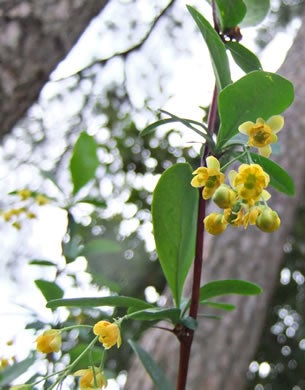Polk County’s Most Wanted Plant: American Barberry (Berberis canadensis)
Published 10:00 pm Friday, April 14, 2017
In a joint effort to expand the knowledge and understanding of the flora and fauna of Polk County, the Pacolet Area Conservancy (PAC) and botanist David Campbell need your help in locating this month’s “Polk County’s Most Wanted-Plant,” the enigmatic and rarely seen shrub, American Barberry (Berberis canadensis).
In spite of its scientific name, Berberis canadensis, this plant is not to be found in Canada, but has as its center of abundance the southern Appalachians, with some outlying populations in Missouri, Illinois, and Indiana. Preferred habitats include rocky woodlands, bluffs, roadsides, and glades on mafic/circumneutral soils that are relatively high in pH.
American Barberry is a small shrub that may attain heights just slightly in excess of six feet, with leaves that are ovate, simple, alternate, and deciduous. A notable feature is numerous thorns; each node possesses three obvious ‘spikes.’ A closely related species that sometimes escapes cultivation is Japanese Barberry (Berberis thunbergii); Japanese Barberry usually has a single thorn opposed to American Barberry’s thorns in ‘threes.’ American Barberry has yellow flowers that are radially symmetrical, with six petals and six sepals. In our region, flowering occurs in April. Mature fruits are red, elliptic, and are seen in late summer to early fall.
American Barberry has never been recorded in Polk County, but does occur in nearby Rutherford and McDowell counties. Suitable habitat is not uncommon in Polk and this species should plausibly occur here. This is not a plant that ‘jumps out’ at the casual observer, and when young, or not in flower or fruit, may be easily overlooked. The flowering period is almost upon us, so keep a look-out for this rare, but likely, under-reported shrub when you are out walking the woodlands in the next few weeks.
If you feel that you have sighted this or any other Polk County’s Most Wanted species, contact staff at the Pacolet Area Conservancy at 828-859-5060 or e-mail comments, questions or photos to landprotection@pacolet.org.
All of the Polk County’s Most Wanted can be viewed at pacolet.org. Click on the Conservation tab and scroll down and click on the Polk County’s Most Wanted tab.
PAC has also created a Pocket Guide of Polk County’s Most Wanted that can be printed and taken in the field. The pocket guide can be accessed on
pacolet.org.
– article written by David Campbell





